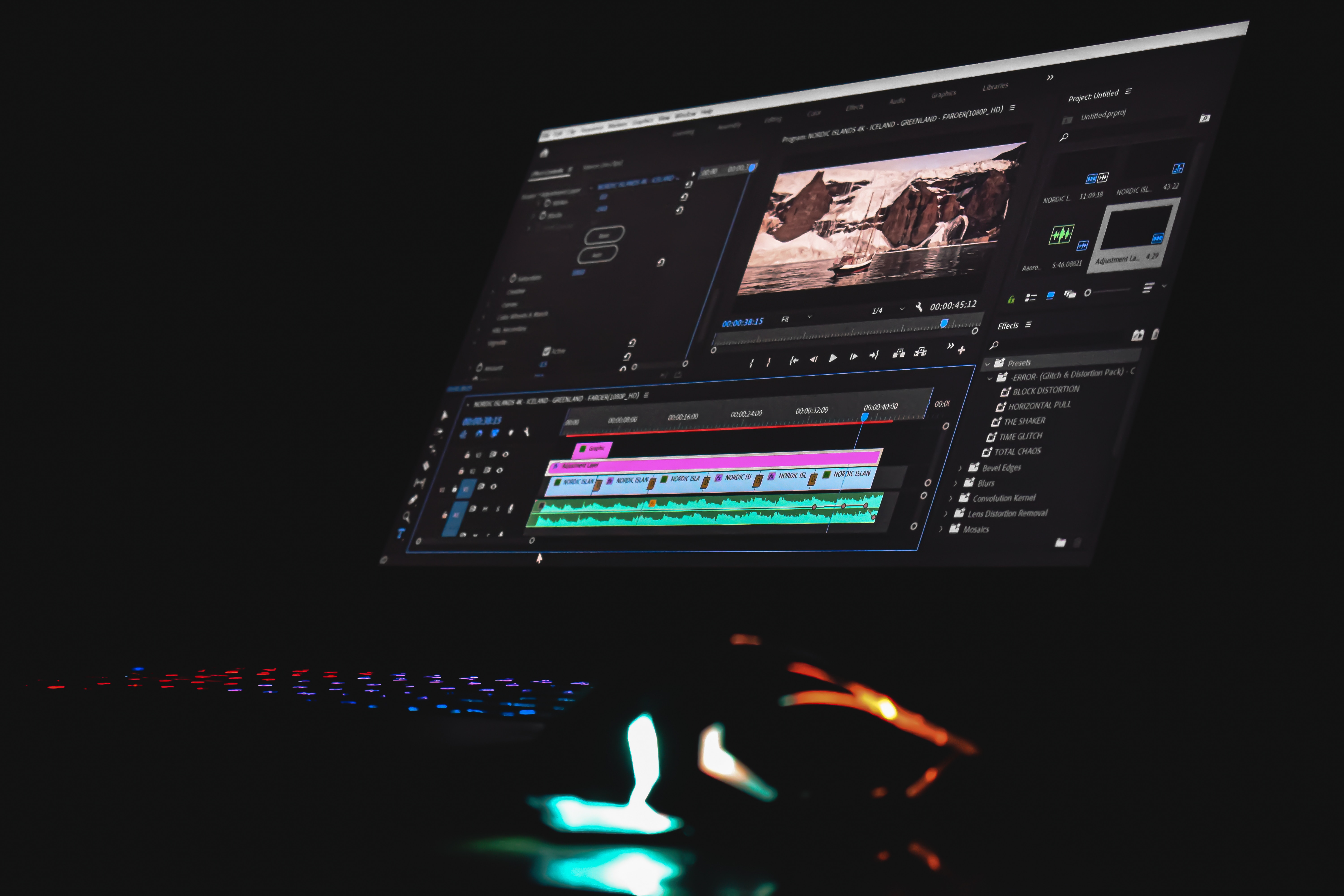We see video resolution when purchasing TVs, editing our camera settings, and choosing playback quality, but what is video resolution, really? And what is the best video resolution for your project?
It's critical to be aware of your video resolution sizes and aspect ratios when creating video content. A video with low-quality or inconsistent screen resolutions can distract its viewers and keep them from paying attention to its message. Likewise, content creators who stay atop their resolution can create high-quality content with grabbing and detailed visuals.
What Is Video Resolution?
A video's resolution defines its size, both as a picture and as a file. The more pixels a video has, the larger and clearer it will be. For example, an 8K UHD video is about 8,000 pixels wide and is twice the file size of a 4k video. Comparatively, a video's aspect ratio describes its relative height and width and can be changed to meet different resolution and orientation needs.
Keeping track of video resolution is important for maintaining consistency and quality in your videos, especially in the post-production process. Some video editing software may automatically crop high-resolution footage in your timeline, leaving it up to you to catch, correct, and readjust every clip. Additionally, using footage with different resolutions can make your video feel disjointed if edited improperly.
As a general rule of thumb, the resolution of your completed video should not exceed that of its lowest-resolution footage. So, a video shot with 2K and 8K cameras should only be exported in a 2K format or less. Otherwise, the 2K clips will look grainy and low quality compared to the rest of the video.

Common Resolutions
It's important to double-check and understand your camera's video resolution and capabilities before filming anything. Otherwise, you may not identify resolution problems until you make image edits. Check out our list of video resolutions below.
Standard Definition (SD) Resolution
Standard Definition (SD) is the lowest level of video resolution still used today and refers to any resolution with a width of 480 pixels or less. Despite being the lowest resolution, SD is called the "standard" because it was the primary video specification used for broadcast and cable television until HD's takeover in 1998.
Due to their low pixel density, SD videos are noticeably low-quality when used alongside higher-resolution videos. This makes SD videos challenging to work with in larger projects, as other clips, graphics, green screen removal, and VFX can quickly highlight the videos' low quality.
High Definition (HD) Resolution
High Definition (HD) is the current most common video resolution for cable with a width of 720 pixels or more. HD videos are significantly less grainy and more detailed than SD videos, sometimes with twice as many pixels.
Despite not being the highest resolution, HD is still passable due to its high pixel density. In general, HD's low resolution only becomes noticeable when videos are poorly lit, cropped, zoomed, or juxtaposed next to higher resolutions.
Ultra-High Definition Television (UHDTV) Resolution
Ultra-High Definition (UHD) or Ultra HD describes almost any resolution greater than HD. Its most basic format is 1,920 by 1,080 pixels, with 4K and 8K UHD among its most complex formats.
These high resolutions are ideal for theatrical viewings and other larger screens. However, filming and editing in UHD can even be useful if you only plan to export in HD resolutions. Cropping, zooming, and reframing clips with HD resolutions can quickly take away from their pixel density and make them look SD, whereas cropping UHD clips should always look high-quality.
2K, 4K, and 8K UHD Resolution
2K, 4K, and 8K are three of the largest and most common video resolutions for UHD footage. Their standard pixel sizes are as follows:
- 2K UHD: 2,048 x 1,080 pixels
- 4K UHD: 3,840 x 2,160 pixels
- 8K UHD: 7,680 x 4,320 pixels
These resolutions are frequently used for movies, TV shows, and high-budget commercials. They can typically only be captured with heavy-duty cameras, such as the RED V-RAPTOR, and take up massive amounts of memory storage. 2K, 4K, and 8K UHD resolutions are also somewhat challenging to edit, especially when using low-performance or low-memory computers.
Vertical Resolution vs. Horizontal Resolution
Deciding between landscape and portrait orientations for your videos is more important now than ever. Whereas most videos used to be set in a horizontal format, the rise of cell phones and social media has quickly changed what video orientations should be used in different contexts.
Recommended Resolutions for Mobile Devices
Though some iPhone cameras can capture image resolutions up to 4K UHD, most resolutions for smartphones are only 1080p or less. As a result, most HD video resolutions should look perfectly fine on smartphones, so long as you use the right format.
Which resolution and orientation you choose ultimately depends on where you share your video. For TikTok, Instagram, and many other social media video player platforms, you should stick to vertical resolutions with 9:16 aspect ratios. While you can still post videos with 1:1 and 16:9 aspect ratios on TikTok, they aren't nearly as popular as vertical videos. Without a full-screen option, viewers may swipe past your video or miss important details.
Best Resolutions for Video Editing and Visual Effects
The industry standard for video camera resolutions when working with VFX is 4K UHD or greater. These larger resolution sizes ensure video editors have enough elements to use and pull from the footage without making anything look pixelated or out of place.
When working with lower resolutions, VFX designers often have to digitally replace parts of the image and cut visual elements to meet the current resolution standards. Because of this, you should increase video resolution for any VFX-heavy projects and virtual video productions, even if you only intend to release the project in HD.
Overall: What Is the Best Video Resolution?
Determining the best video resolution ultimately depends on the project you have in mind, be it a Super Bowl commercial or a student film. Standard video resolutions like HD and 1080p are perfectly acceptable for most social media content but could fall short when played on 2K TVs and gaming monitors. Comparatively, 4K and 8K UHD resolutions give you more options for VFX and framing but can quickly fill up your camera and computer memory.
The safest strategy for high-quality content is to stick exclusively within the UHD resolution range, especially as SD and HD grow more outdated. High-quality music and sound effects can make your video content stand out even more. Visit our library of royalty-free music for YouTube to make your next project's audio as striking as its video.




